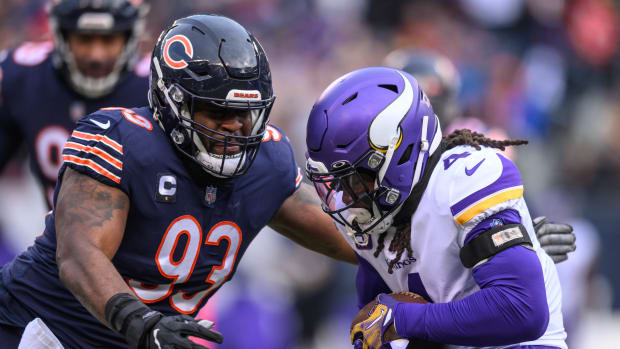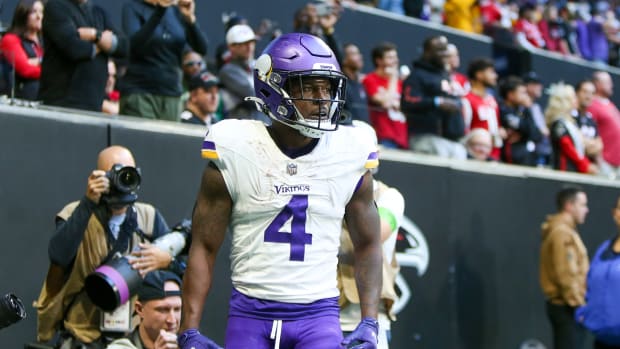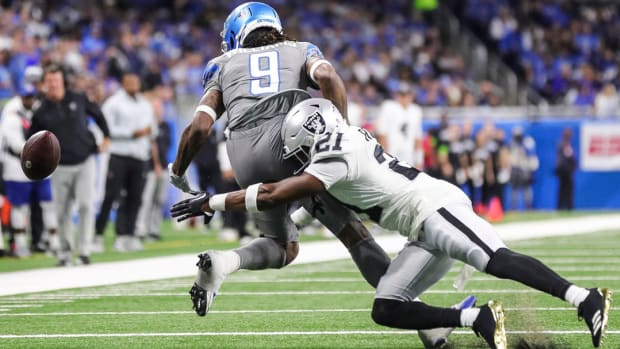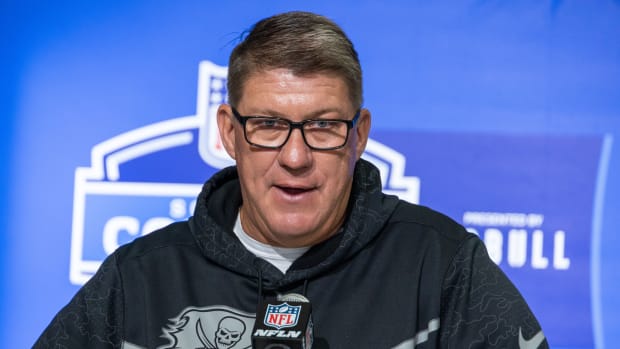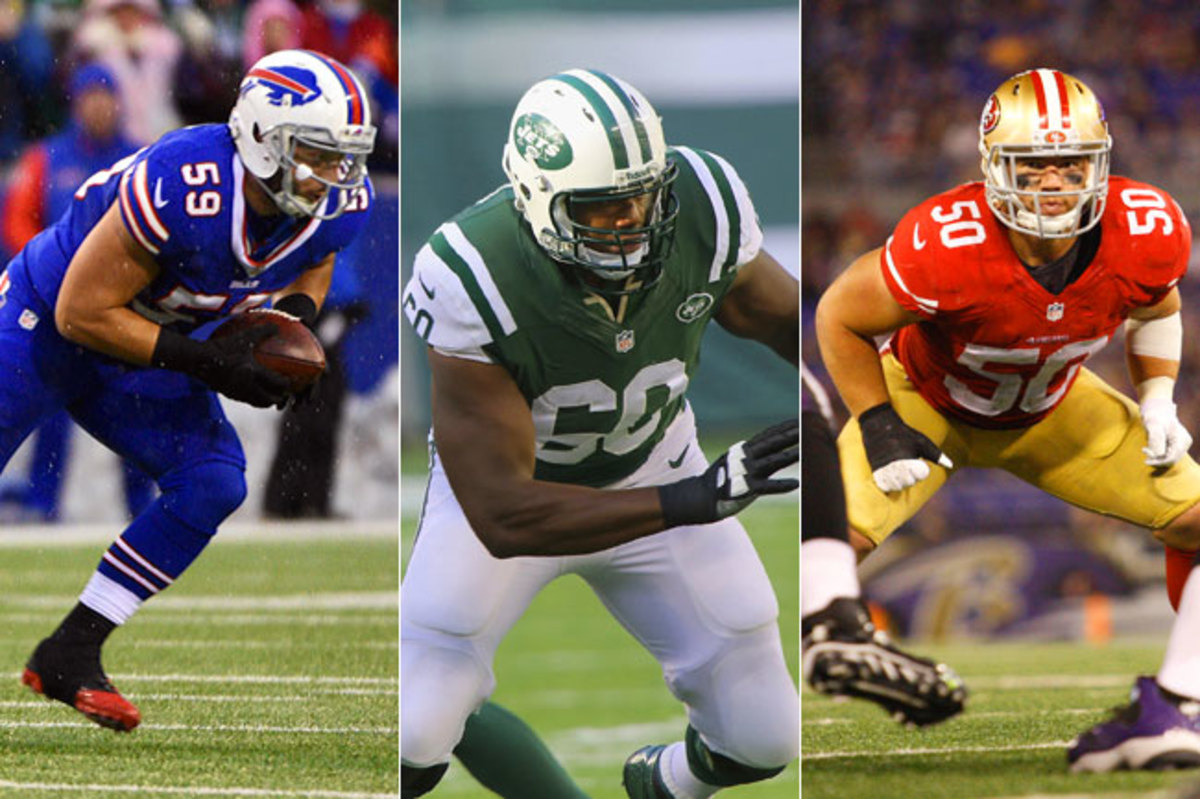
Why Early Retirements Aren’t a Threat to Football
The recent retirements of D’Brickashaw Ferguson, the well-known Jets tackle, and A.J. Tarpley, the lesser-known Bills linebacker, led many in the media to revisit football’s concussion crisis and it’s repercussions for the future of the game.
For me, it all brought to mind the NFL’s uniform policy.
There’s an odd line of text ensconced in the league’s five-page uniform code, which legislates everything from towel length to glove color and provides an amusing read on how to subdue individualism. The line in question: “A player’s appearance on the field conveys a message regarding the image of the League and directly affects the League’s reputation and success.”
I first read it last year, when players were being fined for honoring their late parents with messages written on tiny patches of eye-black. This was nothing new for the so-called No Fun League, except the suits in New York were finally being challenged by causes that people could get behind, such as familial loss, breast cancer awareness and domestic violence awareness. Last fall, many spotlighted how this particular line was at odds with the employment status of Greg Hardy, the Cowboys’ defensive lineman who was found guilty by a North Carolina judge of assaulting his ex-girlfriend, only to walk free and right onto the field after a jury trial couldn’t be seated.
A player’s appearance on the field conveys a message regarding the image of the League and directly affects the League’s reputation and success.
Beyond the obvious contradiction of the league’s historically laissez-faire approach to player conduct and it’s stringent uniform code, something else has always bothered me about the uniform policy. From a business standpoint, aren’t icons and personalities supposed to be good for sports? They’re the ones who bolster brands, inspire fans and sell basketball jerseys in China and soccer jerseys in Spain. What could be so wrong with letting football players express themselves on Sunday afternoons? What could be so wrong with letting them appear to be a little more human?
Boxing once thrived on the celebrity of the people it damages the most; football thrives on the few stars it protects and the scores of anonymous bodies it destructs. It’s in the NFL’s best interest to suppress individuality.
As I contemplated the growing number of men who are walking away from pro football, leaving good years and millions on the table, I realized that the NFL is very much in tune with its own reality. Beyond the vital position of quarterback, icons and personalities aren’t good for the business of football.
NFL players tear their ACLs and snap their legs. Often enough, they struggle to walk and tie their shoes at 40 years old. They can have difficulty recalling the names of their children. Occasionally, they shoot themselves in the chest so the world can know what the game did to their brains.
The league has taken steps to make football a safer sport, but as we’ve seen with Chris Borland walking away in 2014, and now with Ferguson and Tarpley doing the same this offseason, it’s hard to view football as anything but an intrinsically dangerous game. That realization has led many to project football going the way of boxing. But it’s an imperfect comparison for one very important reason.
Boxing once thrived on the celebrity of the people it damages the most; football thrives on the few stars it protects and the scores of anonymous bodies it destructs. That’s why it’s in the NFL’s best interest to suppress individuality, because there’s no telling when a Big Name is going tear a ligament or lose the ability to do long division in retirement. If everyone looks the same in this violent game, there’s a chance you might not notice a different person wearing Tarpley’s number 59 jersey number in Buffalo next fall.
The icons who drive business and keep fans coming back are QBs like Tom Brady, Cam Newton, and Russell Wilson. To protect these golden geese, the league has made it a grave sin to hit one of them in the head, or below the waist, or otherwise treat them like a football player. And the position has prospered. The four most productive passers last year, in terms of yards, are now 37, 34, 38 and 36 years old (Drew Brees, Philip Rivers, Tom Brady and Carson Palmer). Each played 16 games last season, and not one has breathed a word about retiring anytime soon. Brees says he wants to play until he’s 45, and Brady is thinking the same way. (Peyton Manning retired six weeks shy of 40.)
No one in the league office is crying over Tarpley—an undrafted free agent who, at 23, walked away from football after one NFL season because of his concussion history dating back to high school. Football will survive for the foreseeable future because the pool of players is so enormous, and because the NFL knows which players are replaceable and which aren’t. For every player like Tarpley who retires early, there are hundreds in line willing to put their bodies at risk for NFL glory and NFL money.
Whether they left the game in relative good health or in some form of disrepair, Ferguson and Tarpley were always going to be expendable. It’s the brutal calculus of their positions, and it was virtually written into the NFL’s uniform code.
• Question? Comment? Let us know at talkback@themmqb.com
































